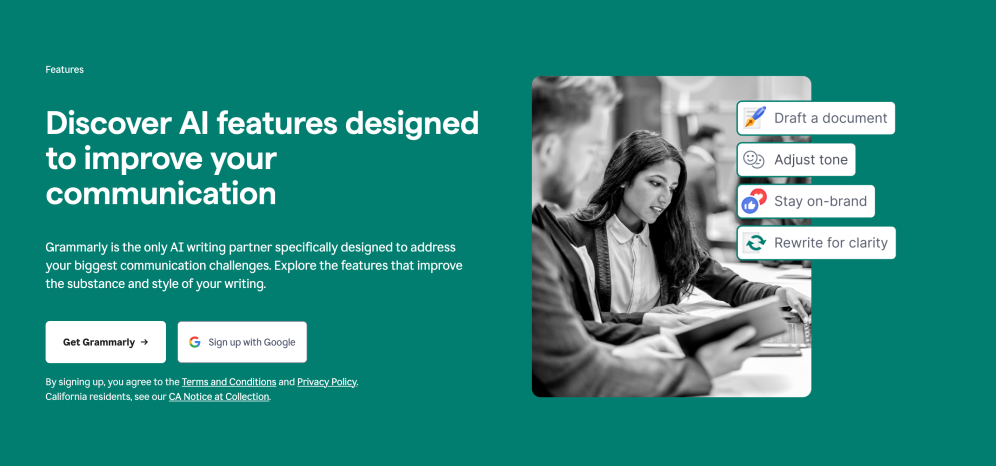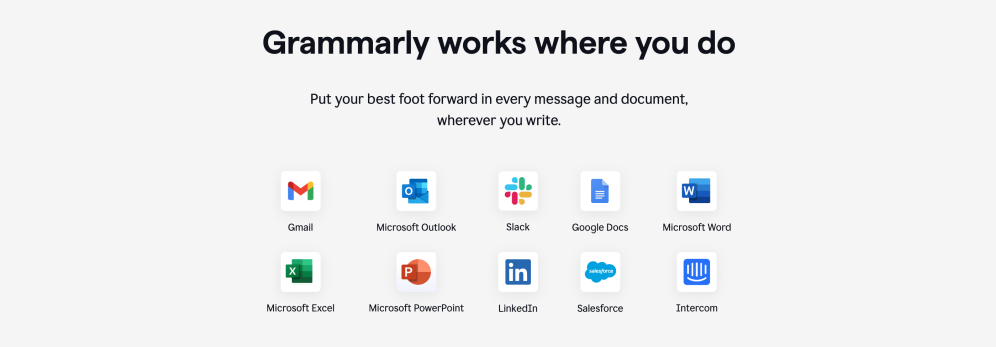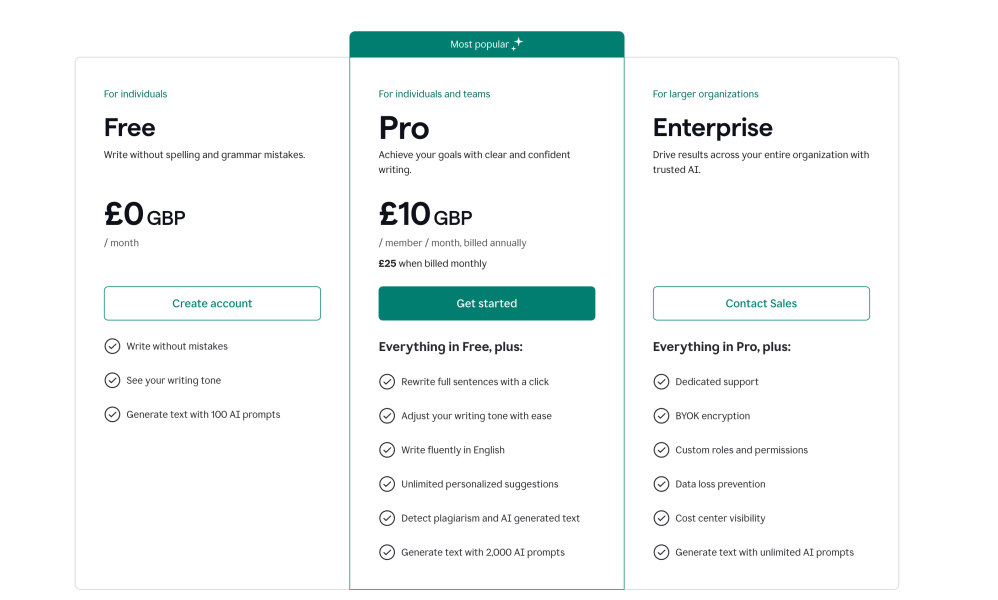If you use English at work or school but it’s not your first language, you’ve probably heard about Grammarly. With so many grammar tools and AI writing assistants available today, it becomes overwhelming to decide which one truly helps you step up your writing. In this 2025 Grammarly review, I’ll break down how this tool works for non-native English speakers, what day-to-day use is like, and where it actually brings value—or falls short—when you want your writing to sound clear and confident everywhere it appears.
I depend on Grammarly nearly every day for work emails, first drafts of reports, and even those quick Slack messages sent on busy afternoons. If you’re after real examples, no-nonsense advice, and honest answers about whether Grammarly can boost your writing as a non-native speaker facing the challenges of business English, you’ll stumble upon plenty of useful insights right here.
What Is Grammarly? A Brief 2025 Overview
Grammarly is an AI-powered grammar and writing platform built to help users check spelling, grammar, punctuation, and style. It’s available as a browser extension, desktop app, Microsoft Office plugin, and even through a dedicated mobile keyboard app. Grammarly comes in two basic versions: Free and Premium. The free version covers spelling, grammar, and punctuation basics. Premium gives a boost with more advanced features such as clarity suggestions, tone detection, and vocabulary improvement.
Functioning as an AI writing sidekick, Grammarly checks your writing live and gives rapid feedback. This makes it super practical for catching mistakes as you’re typing, whether you’re sending business messages or working on bigger documents. I often use the Chrome extension for web-based work, but when I need a more super detailed edit, I switch to the dedicated app. This means Grammarly fits nearly any type of writing—business emails, class essays, or formal reports—even if English isn’t your first language.
Key Features That Matter for Non-Native English Speakers

I know well how stressful it can be worrying about grammar mistakes or awkward phrases when writing in English. For non-native speakers, a tool like Grammarly becomes an essential companion because not only does it point out mistakes, but it also breaks down why they happen—helping you avoid them next time.
Grammar and Spelling Correction
The main job of Grammarly: catching grammar and spelling errors. It picks up on things like wrong articles (“a” vs. “the”), subject-verb mismatches, and spelling slip-ups that are even more common if you’re thinking in your native language. In my experience, Grammarly spots issues I might not even notice without a second pair of eyes on my work.
Clarity and Tone Suggestions
Clarity is crucial, especially at work. Grammarly’s structure and word order tips help make your sentences easier to follow and less awkward, particularly if you’re translating directly from another language in your head. I also get a lot out of the tone suggestions—for example, my emails used to seem too blunt, but now Grammarly nudges me to soften my words when that’s more appropriate.
Vocabulary Suggestions
If you often repeat words or feel your language isn’t as flashy as you’d like, Grammarly suggests synonyms. It points out dull or weak words and highlights stronger, more precise alternatives. For ESL writers, these tips can really add to your confidence and polish. I’ve picked up plenty of new expressions from these features.
Formal Language Feedback
Struggling with being too informal or sounding too stiff in business writing is a common problem. Grammarly flags contractions, idioms, or phrases that might feel odd in a job application or formal note. This guidance helps prevent awkward or off-putting language and increases your chances of making a great impression.
AI Rewrite and Paraphrasing
Grammarly Premium’s recent upgrades (including GrammarlyGO) let you highlight passages and request a rewrite. If you translate directly from your native tongue and it sounds stilted in English, this feature smooths things out. The AI usually offers more natural, fluent alternatives. I use this often when I feel stuck on complex or unclear sentences and it’s saved lots of editing time.
Support for Different English Variants
Grammarly lets you pick American, British, Canadian, or Australian English. This makes it easy to match spelling and wording to your goals—say, preparing for an international exam or tailoring your CV for overseas jobs. I often switch settings depending on my audience, and Grammarly automatically adjusts things like spelling and vocabulary.
Real Use Cases: Grammarly for Non-Native Professionals
Grammarly is useful for so much more than essays or homework—here’s how I and others actually use it in professional situations.
Emails at Work
Before sending any important client messages, I let Grammarly catch unclear language or overly direct phrases. It usually offers more polite alternatives and makes sure my tone hits the mark for business communication.
Job Applications, CVs, and Cover Letters
Few things are more nerve-wracking than writing job applications in English when it’s not your first language. Grammarly double-checks not just grammar and spelling, but also tone, clarity, and those tiny details that make you look sharp and professional. Avoiding embarrassing mistakes could mean the difference between landing an interview or not.
Practicing for Interviews
Drafting and editing your interview answers in Grammarly means getting grammar and word choice feedback. This helped boost my confidence for in-person and online interviews, making sure I sounded fluent, natural, and polished when it counted.
Upgrading LinkedIn Posts and Proposals
Whether you’re posting on LinkedIn, sending out proposals, or writing research reports, Grammarly tailors its tips to your audience. It flags when you’re too informal, not clear enough, or too long-winded. The result: better feedback from colleagues and a more professional online presence.
Pros and Cons: My Honest Grammarly Review for Non-Native Speakers
I’ve seen real improvements thanks to Grammarly, but it isn’t perfect. Here’s what stands out:
- ✔ Live corrections: Catches mistakes as you type—ideal for quick chats and browser writing.
- ✔ Understandable explanations: Breaks down grammar rules in plain terms, so every suggestion becomes a mini lesson.
- ✔ Works everywhere: Browser, desktop, or mobile—it syncs smoothly and remembers your settings.
- ✔ Spot-on tone and style advice: Let’s you know when you’re being too casual or too stiff, especially helpful in professional messages.
- ✘ A bit too eager at times: Sometimes, Grammarly’s suggestions don’t fit your meaning, so don’t blindly approve every change.
- ✘ Misses complex context: Particularly tricky turns of phrase or idioms from your first language can sometimes stump the tool.
- ✘ Premium price tag: The free version covers basics, but the helpful Premium features are behind a paywall.
Grammarly Free vs Premium: Should You Go Further?
The free edition of Grammarly is solid for catching simple grammar blunders, spelling, and punctuation in quick messages and emails. Excellent for students or anyone working mostly in conversational English. If, however, you’re shooting for polished reports, job applications, or consistent client communication, the Premium version’s capabilities really pay off.
With Premium, you gain access to clarity rewrites, vocabulary suggestions, in-depth sentence structure corrections, and reliable tone recommendations. These tools make your writing stand out so you don’t just avoid mistakes—you impress, even if English isn’t your strongest language. When I needed extra help crafting job and client letters, I shifted to Premium, and found it made my writing both correct and impressive.
Bottom line: If you’re simply handling classwork or chatting with friends, stick with Free. But, if your career or client relationships depend on sharp, confident English, give Premium a shot—at least for a few months as you level up your skills.
Grammarly Plans and Pricing: 2025 Update

It’s easy to start with Grammarly’s free plan, and you can use it as long as you want without paying. Premium begins at roughly $12/month on an annual plan, which unlocks all those advanced features that add depth to your writing. There’s also a Business version for organizations, offering team features and analytics—though the actual writing suggestions remain the same.
You don’t need a credit card to test the Premium level—try it, see what advanced suggestions appear, and decide if it’s worth the investment. On a tight budget? Stick with Free, then move up if you find Premium takes your writing a notch higher during job applications or work projects.
Free Trial: YES. Try Grammarly here! (No credit card required)
Learning With Grammarly: Does It Actually Make Your English Better?
What I appreciate most about Grammarly is that it’s more than a spell-check—it’s a tutor in your pocket. I regularly check its explanations; they present examples in clear, simple language. After months of use, my rough drafts had fewer errors because I started remembering past tips. My writing began to sound more natural as I picked up lessons from each correction along the way.
Grammarly also sends out weekly updates sharing your recent mistakes, vocabulary trends, and overall word count. I got a lot of value tracking that progress—it encouraged me to work on weak areas like punctuation and tone, turning feedback into steady growth as I shifted from thinking in my native language to fluently writing in English.
AI Writing Assistance: How Good Is Grammarly in 2025?
Grammarly keeps adding AI features to make writing, paraphrasing, and tone-shaping even easier. Its AI rewrite tool can polish a paragraph or sentence, giving you a more professional or clear version almost instantly. This is ideal if you want to sound native without relying on clunky translator apps.
The updates also let you shift tone—for instance, making something warmer, more formal, or more brief. While it’s not perfect, I find the AI points me in the right direction most times, and often all I need is a little tweak to finish up. Using Grammarly’s AI is no substitute for learning, but on deadline days, it cuts back on stress and speeds things up when you’re not sure how to phrase something.
Community and Support: Not Alone on the Adventure
While Grammarly doesn’t have a huge open forum, its help center is thorough, with how-tos and FAQs for every platform. When I had an issue with the Chrome extension, support got back to me rapidly with a quick fix. Their blog also offers frequent writing tips, especially aimed at non-native professionals and students looking to step up their game.
Community-wise, you can find challenges and stories on social media, but don’t expect a built-in peer-to-peer tutor. Even so, there’s a steady stream of new guides and blog posts for learners looking to get the most from the app.
Is Grammarly Accurate for British and Other English Variants?
Friends often ask if Grammarly really works for British English or for other variations like Canadian and Australian standards. Setting your preferred English variant in the app is easy. Grammarly’s corrections and suggestions flow naturally depending on your preference, matching nuances in spelling, punctuation, and vocabulary. For those prepping for exams, building UK-style CVs, or collaborating across borders, it’s reliable (I’ve checked using British spelling in reports and it didn’t miss a beat).
The Limits: Where Grammarly Falls Short
There’s no perfect grammar tool. These are Grammarly’s main shortcomings, in my experience:
- Some suggestions don’t fit, especially with technical terms or specialized industry language, so always review before approving changes.
- It’s not a replacement for real human feedback. For big projects—or anything with legal or academic weight—have an experienced editor or native speaker give a last review.
- It isn’t a translator and doesn’t work for non-English writing. Still, it helps ESL writers catch recurring patterns by comparing English phrasing with native usage.
I treat Grammarly as my first draft filter, not the final judge, especially on important writing where clarity really matters. You shouldn’t rely on any AI tool – they are there to support and assist you not replace you.
What Do Teachers and Employers Think?
Most professors and managers I’ve spoken with see Grammarly as a helpful add-on—not a substitute for learning the language well or understanding grammar. Many businesses recommend it before staff members send out client notes or public statements in English. In school, instructors like that students catch small mistakes themselves before handing in work, but stress that important assignments still require a hands-on edit. Combining Grammarly’s help with feedback from real people is the best way to grow and shine in English.
How Does Grammarly Stack Up Against Other Grammar Tools in 2025?
The market’s packed with grammar checkers, but Grammarly stays my favorite because it’s easy to use and the explanations make sense. Tools like ProWritingAid or LanguageTool offer some cool extras—like more collaboration options or super detailed editing for technical writers—but I find myself returning to Grammarly for the day-to-day. Its interface is friendly and flexible as your English improves.
If you’re unsure which tool matches your style, try out a few free versions. Compare how well they catch your most common mistakes and see which one feels most natural to your workflow.
Privacy and Security: Is Grammarly Trustworthy?
When you handle sensitive work material, privacy is crucial. Grammarly’s privacy policy is transparent, and I haven’t run into security problems after several years of use. Files are encrypted, confidential docs are wiped when you clear them, and you can limit data sharing with outside partners. Still, it’s wise not to paste truly confidential info into any online tool if you can avoid it.
Who Gets the Most from Grammarly in 2025?
From my daily use and talking with other non-native professionals, Grammarly makes a real difference for:
- Job seekers (for resumes, cover letters, and interview prep)
- Students (essays, research projects, scholarship letters)
- Entrepreneurs and startup owners (proposals, business emails, international outreach)
- Any professional who writes lots of English emails or reports
- Anyone wanting clearer, friendlier, and more professional English
Spotting typos and small errors is easy with Free, but for real growth in business English, taking Premium for a test drive is often what builds confidence fastest.
Wrapping Up: My Personal Recommendation
I’ve used Grammarly for years, and recommend it to anyone seeking a simple, reliable way to make their writing stand out. If you’re a non-native speaker, it’s more than just a grammar checker—it’s a learning partner that’s improved my confidence, clarity, and style at work. Rely on it to smooth your drafts, but combine it with occasional human feedback for best results. In fact I have a learning guide that incorporates Grammarly as part of your daily learning habits!
If you want tips, have your own stories using Grammarly, or are looking to step up your business English even further, share your experiences below or check out my downloadable guide for non-native English professionals (Try Grammarly here if you haven’t yet).
FAQs:
- Is Grammarly good for British English? Yes—you can set your language for UK, US, Canadian, or Australian standards.
- What is the downside of Grammarly? Sometimes it suggests changes that don’t fit your context, especially for advanced documents. Don’t use it as your only proofreading step for important files.
- Does Grammarly help with other languages? It’s for English only—though ESL writers find it helps highlight typical translation and usage errors.
- Do professors recommend Grammarly? Many suggest using it as an extra line of support, but not as your main editor before handing in critical work.
If you’ve given Grammarly a shot or want more advice for non-native English writing in 2025, drop a comment below! And keep an eye out for my new guide on essential tools for international professionals whicch includes Grammarly.
